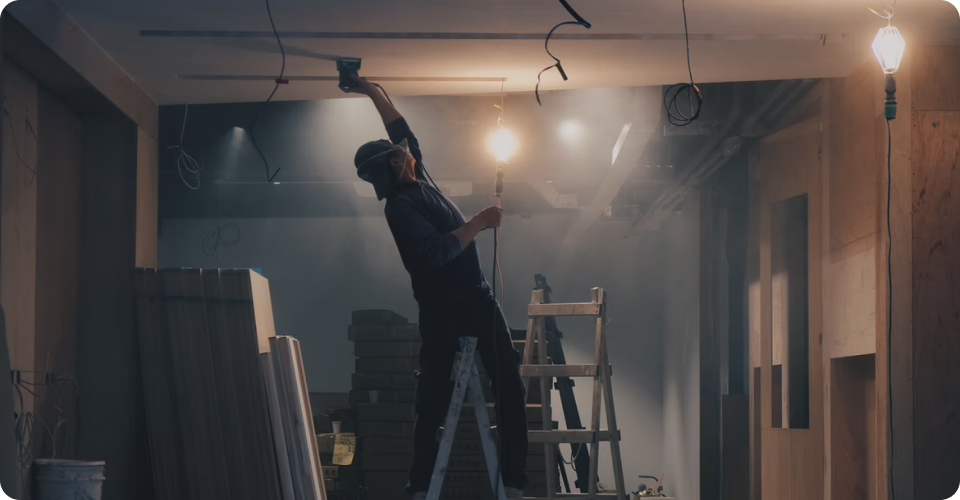The Evolution Of Personal Protective Equipment In Safety Standards
- Published On:
- App Builder
Safety has always been a requirement in workplaces, More importantly so, in industries where employees are prone to certain kinds of hazards like exposure to harmful chemicals; falling objects or heavy loads; sharp edges or dangerous machinery etc. Personal Protective Equipment (PPE) Safety has matured over the years, making these necessary gears safer, more comfortable and all the more protective than before. Right from cloth masks and leather gloves to high-tech PPE gear!
With technological advancements, leading to better products and safety standards; Personal Protective Equipment (PPE) too has come a long way since then. Today workplaces across focus on Personal Protective Equipment Management that involves providing workers with the apt personal protective equipment (including clothing specialized for specific categories/class of work) suitable for particular category of work they are involved with.
Let’s take a journey through the evolution of PPE and see how it has transformed workplace safety.
The Introduction of Safety Standards
In the early 20th century, governments and organizations began recognizing the importance of workplace safety. Laws and regulations were introduced to protect workers, and Personal Protective Equipment (PPE) Safety became a major focus.
Hard hat was one of the first standardized PPEs. It was developed in the 1910s for shipyard workers and then construction and industrial workers began using them frequently. Same time, Respirator was invented to protect against harmful dust and chemicals being produced in mines or chemical industries.
By the mid-1900s, more laws were passed to ensure workers had access to adequate Personal Protective Equipment (PPE). Safety goggles, gloves, and steel-toe boots were made compulsory in numerous fields of work. Employers became responsible for providing PPE to employees; this was a drastic transformation in workplace safety mentality.
Modern Advances in PPE Safety
As technology advanced, PPE became more sophisticated, offering better protection and comfort. Today, Personal Protective Equipment Management focuses not just on providing gear but also on ensuring it meets high standards and is used correctly. Some of the key advancements in modern PPE include:
Lightweight and Comfortable Materials:
Older PPE was often heavy and uncomfortable, making it difficult for workers to wear for long hours. Modern materials like Kevlar, lightweight composites, and breathable fabrics have made PPE more comfortable while maintaining high protection levels.
Smart PPE Technology:
The latest innovation in Personal Protective Equipment (PPE) Safety is the introduction of smart PPE. This includes helmets with built-in sensors to detect impact, gloves that monitor hand movements to prevent strain injuries, and connected safety vests that alert supervisors if a worker is in danger.
Improved Eye and Face Protection:
Modern safety goggles and face shields now come with anti-fog coatings, UV protection, and enhanced impact resistance. These features help workers maintain clear vision and prevent eye injuries.
Advanced Hearing Protection:
Loud environments can cause long-term hearing damage. Newer hearing protection devices, such as noise-canceling earmuffs and smart earplugs, allow workers to block harmful noise while still communicating with teammates.
Fire-Resistant and Chemical-Resistant Clothing:
Workers in industries like firefighting, oil and gas, and chemical manufacturing require special protection. Fire-resistant and chemical-resistant suits have improved over time, using materials that provide better insulation and resistance to hazardous substances.

The Future of PPE Safety
The Future of PPE Safety The future looks indeed bright for PPE Safety, with more advanced technologies on the horizon. Some expected developments are:
AI-Powered PPE:
Smart helmets, gloves, and eyewear equipped with AI to assess risks and issue safety warnings in real time.
Self-Cleaning and Self-Repairing Materials:
PPE developed from materials capable of self-healing small cracks or decontaminating the surface.
Exoskeletons:
A wearable robotic suit that allows workers to lift heavy objects safely and avoid strain related injuries.
Augmented Reality (AR) Safety Gear:
Smart glasses that provide safety information and instructions directly on the worker’s field of view.
As industries evolve, so too will Personal Protective Equipment (PPE), to meet the increased demands of workplace safety.

Conclusion
The evolution of Personal Protective Equipment (PPE) Safety has transformed workplace safety, reducing injuries and improving worker protection. From early leather aprons and cloth masks to today’s high-tech smart PPE, advancements in Personal Protective Equipment (PPE) have made workplaces safer, more efficient, and more comfortable for employees. Proper Personal Protective Equipment Management ensures that workers have the right gear, know how to use it, and stay protected in hazardous environments.
To take workplace safety to the next level, businesses need modern solutions that streamline PPE management, safety compliance, and risk assessment. Knowella’s enterprise-grade SaaS platform helps companies build smarter safety programs with AI-driven technology, QR codes, real-time monitoring, and automated compliance tracking.
Improve your PPE management and workplace safety today with Knowella. Schedule a demo today!
The primary goal of industrial ergonomics is to create a harmonious balance between workers, their tasks, and the tools they use. Key objectives include:
Struggling with safety compliance? Avoid these 8 common mistakes in Health & Safety Management to protect employees & stay efficient!
Effective Health & Safety Management transforms workplace culture, boosting engagement, trust & efficiency. Safety starts here!
Are you struggling to manage your Certificates of Recognition (COR)? Read these 8 expert tips on how to make compliance, employee training tracking audits & using technology easy.